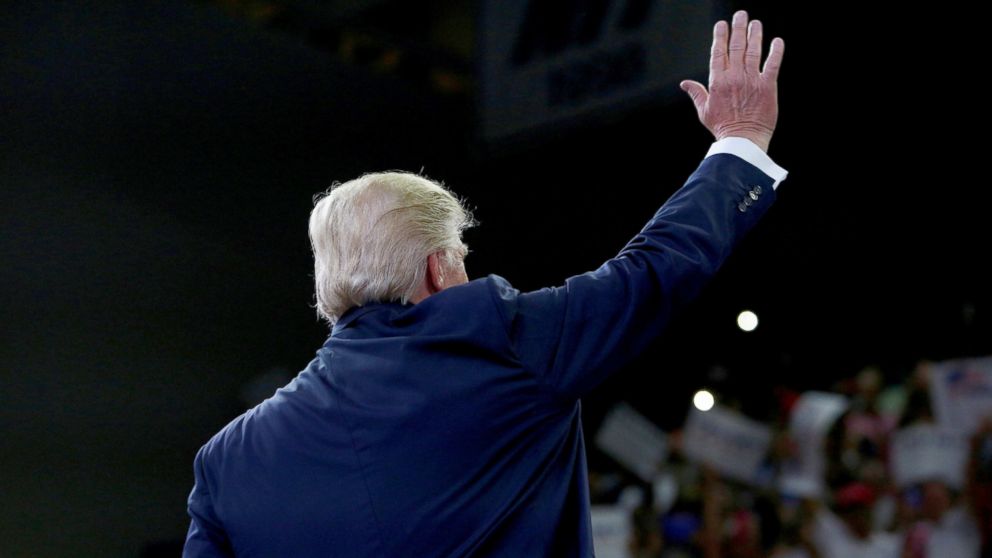From Polling to Production, How a Political Campaign Ad Gets Made
From polling to production, the ins and outs of a political campaign ad.

— -- Television watchers in four U.S. states will notice something a little bit different while watching the boob tube on Friday: advertisements for Donald Trump’s presidential campaign.
Campaign officials have announced that they’ll begin airing television spots on Friday in Florida, North Carolina, Ohio and Pennsylvania –– the first such advertisements for Trump before the general election.
While the announcement came just three days before the ads hit the air, political media strategists say that the process of creating these ads is often planned weeks in advance.
It’s a process that varies from campaign to campaign, but let’s try to unravel the ball of yarn that is political advertising, and look at some of the key steps an ad takes on the way to your living room.
Campaign Apparatus and Forward Planning
The first thing to know is that political ads aren’t spontaneous.
Campaigns establish relationships early in the election cycle with media strategy companies that will be responsible for actually making the ads, said ABC News’ Chief Political Analyst Matthew Dowd.
By the time a candidate’s commercial gets to air, “you’ve already had these people on board for a while,” he said.
Also sitting at the table, in most cases, is a media buy firm, which will be responsible for buying the airtime from television stations around the country.
“The media buy firm is part of the conversation from the beginning,” Dowd said, explaining that campaigns give these firms a target audience and the firms then buy airtime on channels and during times of day that will most likely reach those demographics.
“A campaign wants to reflect its message where it’s going to be most effective,” Doug Heye, a Republican strategist, told ABC News. “What it talks about and what it emphasizes may be different in different places.”
As the election moves forward, the campaign’s chief strategist “is the person who is broadly responsible” for deciding how and when an advertisement will be released, said Dowd, who played that role in George W. Bush’s 2004 campaign.
Crafting a Message
Using polls and focus groups, the strategist and other campaign officials get a broad idea of the message that they want to send to voters.
Dowd described it as, “This is what we want to say about ourselves, and this is what we want to say about our opponent.”
In 2004, he said, the campaign decided early on that its broad messaging strategy was to paint George W. Bush as a strong, decisive leader and John Kerry as a weak flip-flopper.
Heye said that messages should really focus on the ethos of the campaign.
“While polling and things like that are important, ads often come from -- and should come from -- what the candidate’s reason for running is,” he told ABC News.
Once a campaign has a broad idea of its message, it will then consider specific messages that fit within that framework.
The campaign then contacts the media firm or firms and solicits creative ideas for the specific message they have in mind, Dowd said.
The firms then bring them back proposals and scripts, and from those the campaign will greenlight an idea for production.
“Depending on the structure of the campaign, the ad can go through several edits,” Heye said.
Production and Going to Air
Production generally falls into two categories: ads made from archive footage, or ads made by filming the candidate or surrogates for the candidate.
“If it's an ad where you’re compiling footage, that goes very quickly,” Heye explained. “If you need the candidate in the ad, you have to block out the candidate’s time, where they are, and that can add to the time frame.”
The strategist said that often a candidate’s spouse will have input, especially when it comes to whether he or she appears like their authentic selves on television.
If there’s a time a focus group can be assembled to see how the advertisement would play with a target audience, but this is not often the case, Dowd said.
Once final approval is given, the ad is handed off to television stations and appears on your screen at home.
While the process seems straightforward, Dowd said, “You’re planning this out weeks and months in advance,” and “usually there’s a long planning process.”
ABC News’ John Santucci contributed to this report.